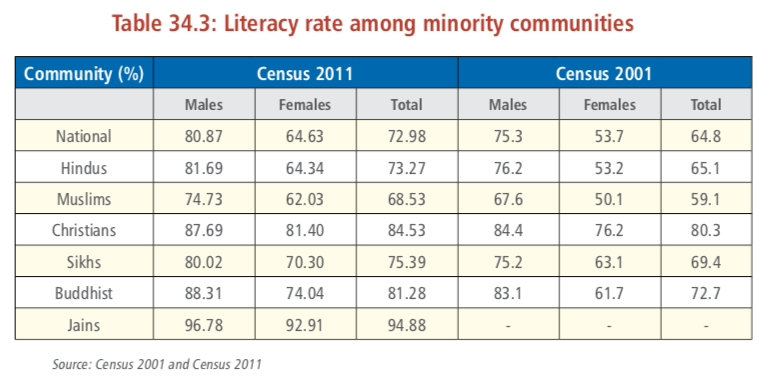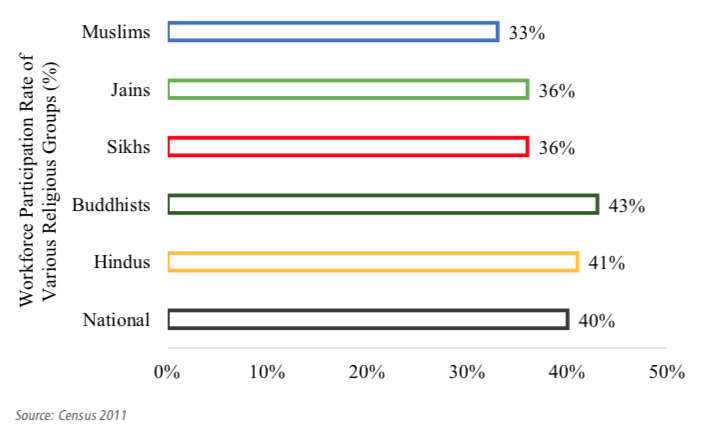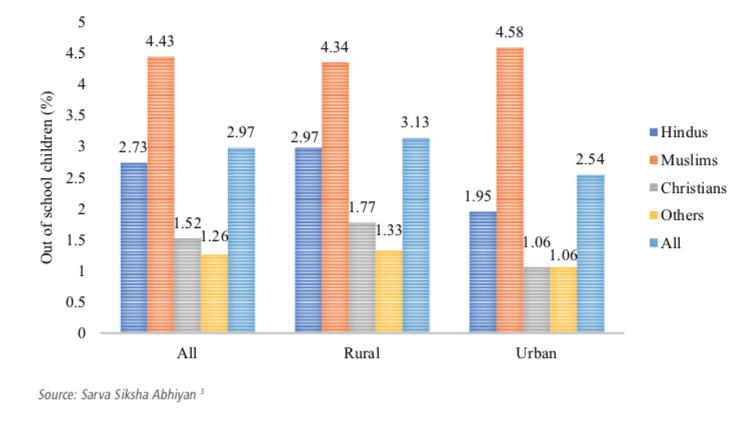SC ST OBC - Tribal Groups and minority
SCs, STs, OBCs, De-Notified Tribes (DNTs), Nomadic Tribes (NTs) and Semi-Nomadic Tribes (SNTs)
Objective
- To accelerate the socio-economic development of SCs, STs, OBCs, safai karamcharis as well as DNTs, NTs and SNTs through focused affirmative action so as to bring them on par with the rest of the population as far as key human development indicators are concerned.
Current Situation
High incidence of poverty and low educational attainment are the two major challenges faced by weaker sections in India. Other challenges include high levels of malnutrition and limited opportunities for meaningful economic engagement.
Among the weaker sections, safari karmacharis constitute one of the most deprived groups. Other groups that require special attention include the Particularly Vulnerable Tribal Groups (PVTGs) among the STs as well as performing artists and those engaged in begging among the DNTs, NTs and SNTs. Research1 on SCs and STs suggests that historical inequities among the different segments of India’s workforce have diminished over the last three decades. The gaps have narrowed most markedly for the youngest cohorts in the workforce, especially in the domain of education. However, there is still a long way to go before the inequities are bridged completely.
Table 34.1: Incidence of poverty across social groups
 Note: Image taken from Niti Aayog - Strategy for New India@75 Document
Note: Image taken from Niti Aayog - Strategy for New India@75 Document
Table 34.2: Literacy rate among social groups
 Note: Image taken from Niti Aayog - Strategy for New India@75 Document
Note: Image taken from Niti Aayog - Strategy for New India@75 Document
Constraints
Problems of isolation, exclusion and occupation- al subjugation are major obstacles to main streaming these social groups in the socio-economic development of the country.
Governance including lack of inter-ministerial convergence and suboptimal targeting of beneficiaries is another major issue.
Resources are distributed thinly among a large number of schemes, especially under the scheduled caste sub-plan (SCSP) and tribal subplan (TSP), instead of among a few targeted schemes.
There is limited awareness about the schemes resulting in leakages and denial of benefits.
Mainstreaming these groups has also been hampered by the inability to incorporate specific cultural and social requirements of SC/ST groups while designing interventions.
Way Forward
1. Institutional and programmatic strengthening
Design Schemes that are Tailored to Serve
Undertake a baseline survey and target remote and tribal habitations for implementation of various development programmes.
Design schemes that are tailored to and narrowly focus on the challenges and needs of specific communities.
Institutionalize social audits for assessing the impact of these schemes on the basis of quantifiable benefits to targeted households.
Establish the National Institute for Tribal Research.
Earmark funds under all developmental programmes for DNTs, SNTs and NTs.
Put in place mechanisms to regularly monitor the implementation of legislations like the Panchayat (Extension to Scheduled Areas) Act and Forest Rights Act (FRA), 2006.
Set up a permanent commission for NTs, DNTs and SNTs along the lines of the National Commission for SCs and STs.
2. Education
Establish Residential Schools
Establish residential schools in uncovered blocks/districts with facilities for vocational training.
Define and ensure adherence to quality parameters for existing and new residential schools.
Increase the number of scholarships provided under the pre-matric, post-matric, National Fellowship and National Overseas Scholarship schemes for SCs, STs and OBCs.
3. Economic Empowerment
Expand the Stand-Up India Scheme
Expand the Stand-Up India scheme to include uncovered social groups like OBCs, DNTs, NTs and SNTs.
Extend venture capital funds and credit guarantee schemes for covering STs, OBCs, DNTs, NTs and SNTs.
Cover a larger number of beneficiaries under various finance and development schemes with an annual increase of 10 per cent every year.
Provide concessional loans for promoting entrepreneurship among OBCs by doubling the number of beneficiaries covered under the National Backward Classes Finance & Development Corporation by 2022-23.
Encourage indigenous tribal medicine alongside other systems to create additional livelihood opportunities.
Establish contact points with potential employers along with pre-job training sessions for youth.
4. Miscellaneous
Ensure Universal Coverage
Ensure universal coverage of DNT, SNT and NT populations for BPL and Aadhaar cards.
Prepare a Vulnerability Index and Vulnerability Intervention Index for PVTGs based on the methodology suggested by the National Institute of Rural Development and Panchayati Raj, Hyderabad. These indices will be useful for assessing the socio-economic disparities between PVTGs and other social groups and designing policy interventions accordingly
MINORITIES
Objective
- To bridge the gap between minority communities and the rest of the population with respect to various socio-economic and human development indicators through affirmative action.
Current Situation
As per Census 2011, of the total population of 121 crore, Hindus constitute 79.8 per cent, Muslims 14.2 per cent, Christians 2.3 per cent, Sikhs 1.7 per cent, Buddhists 0.7 per cent and Jains 0.4 per cent. While improvements have been made on several fronts, religious minorities lag behind on certain indicators pertaining to educational attainment, gender equality and workforce participation.
As per Census 2011, of the total population of 121 crore, Hindus constitute 79.8 per cent, Muslims 14.2 per cent, Christians 2.3 per cent, Sikhs 1.7 per cent, Buddhists 0.7 per cent and Jains 0.4 per cent. While improvements have been made on several fronts, religious minorities lag behind on certain indicators pertaining to educational attainment, gender equality and workforce participation.
Table 34.3: Literacy rate among minority communities
 Note: Image taken from Niti Aayog - Strategy for New India@75 Document
Note: Image taken from Niti Aayog - Strategy for New India@75 Document
Figure 34.1: Workforce participation rate
 Note: Image taken from Niti Aayog - Strategy for New India@75 Document
Note: Image taken from Niti Aayog - Strategy for New India@75 Document
Figure 34.2: Out of school children by religious group
 Note: Image taken from Niti Aayog - Strategy for New India@75 Document
Note: Image taken from Niti Aayog - Strategy for New India@75 Document
Disaggregated data from a survey highlighted that the highest proportion of out of schoolchildren in the country belong to Muslim communities (4.43 per cent), followed by Hindus (2.73 per cent), Christians (1.52 per cent) and others (1.26 per cent).
Data from the 68th Round of the National Sample Survey revealed that the proportion of households in urban India with casual labour and self- employment as the dominant income source was the highest among Muslims at 15 per cent and 50 per cent respectively. The Workforce Participation Rate among Muslims, Sikhs and Jains was lower than the national average according to Census 2011.
Constraints
Data on development indicators for minorities is not generated at regular intervals.
Some minority communities are also included under SCs, STs and OBCs, which could result in the duplication of schemes for the same set of beneficiaries.
Awareness levels and demand for programmes being implemented for the benefit of minorities are limited.
Way Forward
1. Institutional restructuring
Increase the emphasis of the MoMA
Vest the primary responsibility for a number of schemes currently being implemented by the Ministry of Minority Affairs (MoMA) with the relevant line ministries. MoMA should be involved with the finalization of physical and financial targets by the line ministries.
Increase the emphasis of the MoMA on data collection and analysis, identifying gap areas, online monitoring of the PM’s 15-Point Programme, evaluating the impact of various schemes and popularizing schemes in local languages using social media.
2. Education
Enhance Scholarships
Enhance pre-matric scholarships, post-matric scholarships, merit-cum-means scholarships, Maulana Azad National Fellowships and National Overseas Scholarships with a 15 per cent increase annually from 2019-20.
Increase the number of scholarships for girls from minority communities by 10 per cent every year.
Ensure that girls who pass out from Kasturba Gandhi Balika Vidyalayas can continue their education after completing Class 8.
Provide access to public transport in the form of buses and cycles or vouchers for meeting private transport costs to raise enrolment rates among girls from vulnerable communities.
Train at least 100,000 minority women under the Nai Roshni scheme every year.
3. Economic empowerment
Identify the Poorest
Identify the poorest among the minority communities through the Socio-Economic Caste Census data for proper targeting of various schemes.
By 2022-23, provide integrated education and livelihood programmes to 100,000 beneficiaries under the Nai Manzil programme.
Train at least 350,000 beneficiaries during the 5-year period under Seekho Aur Kamao.
Achieve a 15 per cent increase per annum in loans to vulnerable sections through the use of alternative channels like regional rural banks.
Put out job advertisements in Urdu and local language newspapers as well as through other locally appropriate channels.